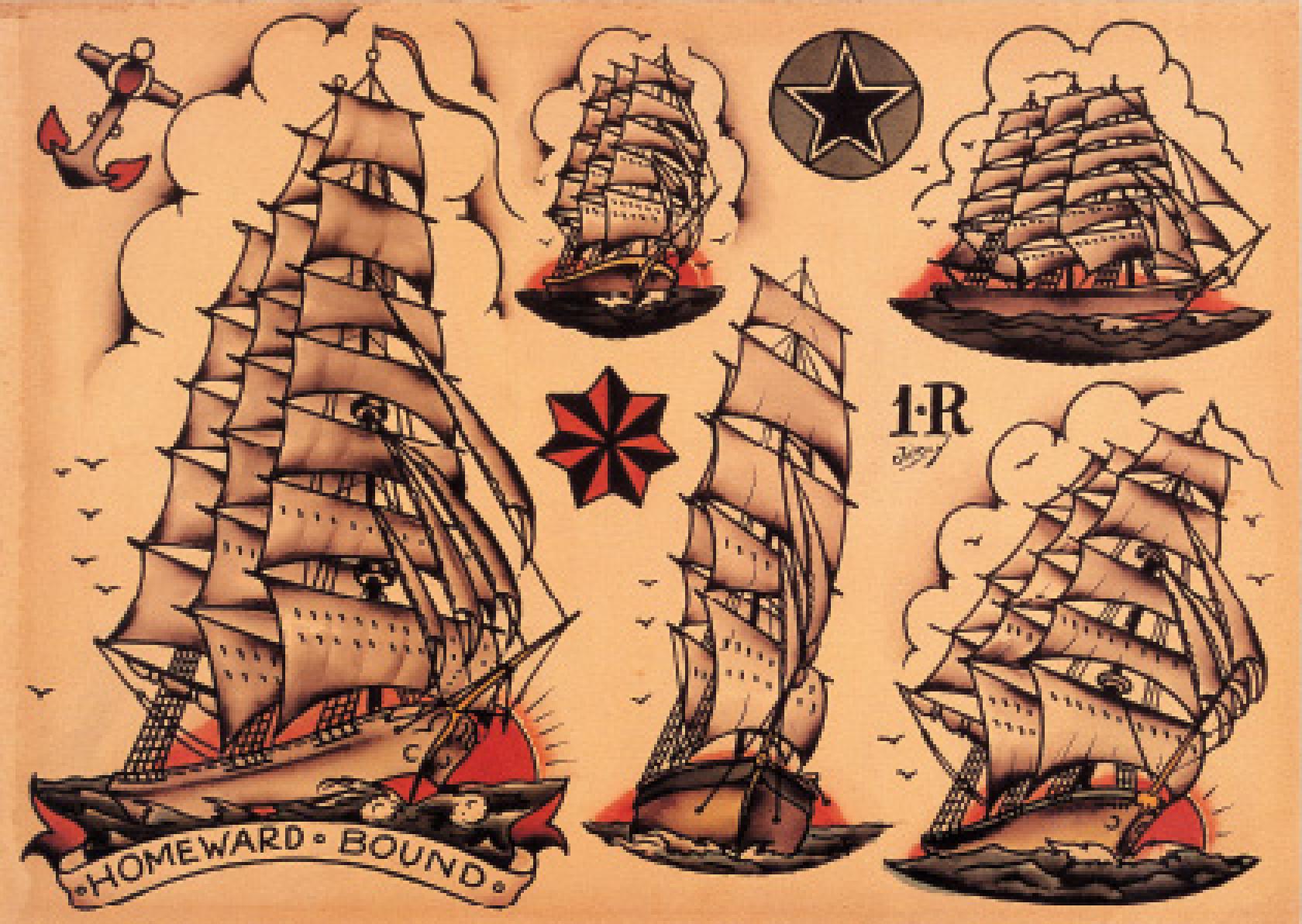The aesthetic I have decided to explore is the aesthetic of american-traditional tattoos. American traditional tattoos are characterized by the limited color palette these tattoos utilize, the bold black outlines on these tattoos, and their minimal shading. They all typically follow very similar motifs, many of which come from their history of influence from American sailors in the pacific. Some of these motifs include but are not limited to mermaids, hearts, anchors, panthers, and snakes.

The american traditional tattoo style started to emerge in the late 1800s, as american sailors started to explore the pacific. In their time in the pacific, these sailors were exposed to tattooing through the polynesian and most importantly japanese cultures. These sailors started to get these tattoos, and where it was introduced into American culture.

In the 1930s these designs became more refined in the american traditional tattoo culture, and the specific motifs, and characteristics of american traditional tattoos were established. During this time, a famous tattoo artist named Norman “Sailor Jerry” Collins, often credited as the father of the American traditional style, refined the traditional designs to more iconic American symbolism, and added more vibrant colors to these tattoos. He was the first American to correspond with Japanese master tattoo artists, and learned different styles and techniques directly from them. The following are some of Sailor Jerry’s designs:

In the 1970s and 80s, the United states started to have a cultural shift in the acceptance of tattoos, and tattoos were more acceptable. This allowed for the style to flourish, as many more people received these tattoos.
The American Traditional Tattoo was largely influenced by the sailing culture in the late 1800s and early 1900s, as it was largely impacted by the introduction of Japanese tattoo culture to United States sailors. The traditional Japanese tattooing style is similarly characterized by its bold outlines and vibrant colors, which translated directly over to the American traditional style.
 The culture surrounding american traditional tattoos is also strongly influenced by its roots in sailing. Originally, American traditional tattoos were strongly associated with “outcasts” of society. At the time, sailors were usually seen as rougher, nonconforming, outcast individuals in society, which much of American society looked down upon. The American traditional tattoo culture spread from sailors to other nonconforming groups of American culture, with the stereotypes that the homeless, sailors, and circus performers were the most likely to have American traditional tattoos. Not until recently in American culture were tattoos of any kind more acceptable in society, and not seen as labeling the individual as an outcast, or nonconforming individual.
The culture surrounding american traditional tattoos is also strongly influenced by its roots in sailing. Originally, American traditional tattoos were strongly associated with “outcasts” of society. At the time, sailors were usually seen as rougher, nonconforming, outcast individuals in society, which much of American society looked down upon. The American traditional tattoo culture spread from sailors to other nonconforming groups of American culture, with the stereotypes that the homeless, sailors, and circus performers were the most likely to have American traditional tattoos. Not until recently in American culture were tattoos of any kind more acceptable in society, and not seen as labeling the individual as an outcast, or nonconforming individual.
The biggest influence that American traditional tattoos have had is on the neo-traditional tattoo style, a style of tattoos that has evolved directly from the American traditional style. Neo-traditional tattoos are characterized by their similar bold outlines, but typically include more vibrant colors, and more complex designs. Where the focus of American traditional tattoos are primarily the meanings behind their symbolistic motifs, the Neo-traditional style is more focused on the aesthetics of their designs:

Citations:
- https://en.wikipedia.org/wiki/American_traditional
- https://sailorjerry.com/en/tattoos/overview/
- https://thehonorablesociety.com/posts/american-traditional-tattoos-style/#:~:text=American%20Traditional%20tattoos%20were%20initially,maritime%20symbols%20for%20their%20tattoos.&text=The%20early%201900s%20saw%20a,Traditional%20style%20leading%20the%20charge.


1 Comment. Leave new
Hi Travis I thought your post was really cool and it was fascinating to learn about the tattoo aesthetic. I loved learning about the history. I am wondering how the evolution of the aesthetic happened to what it is now.